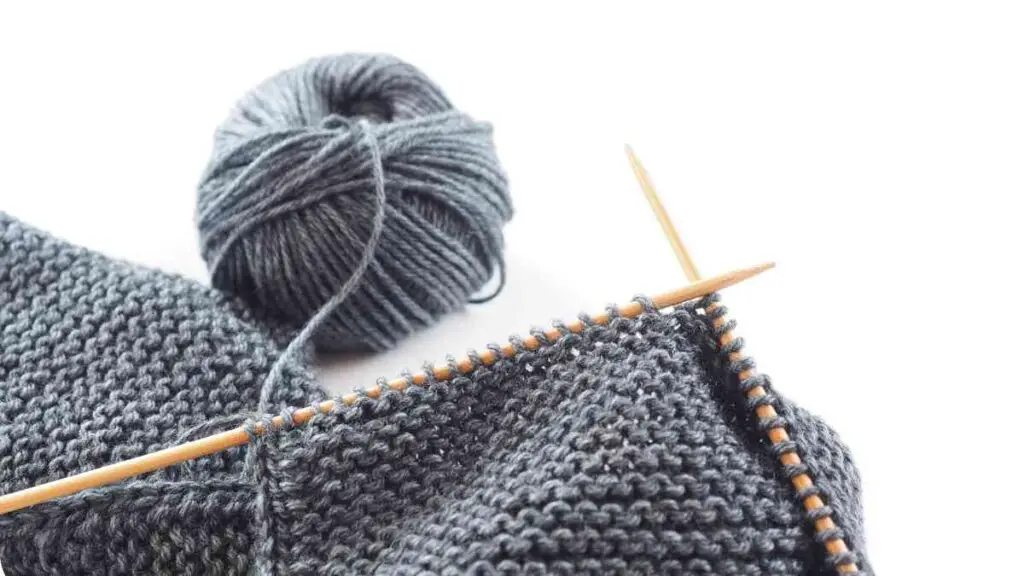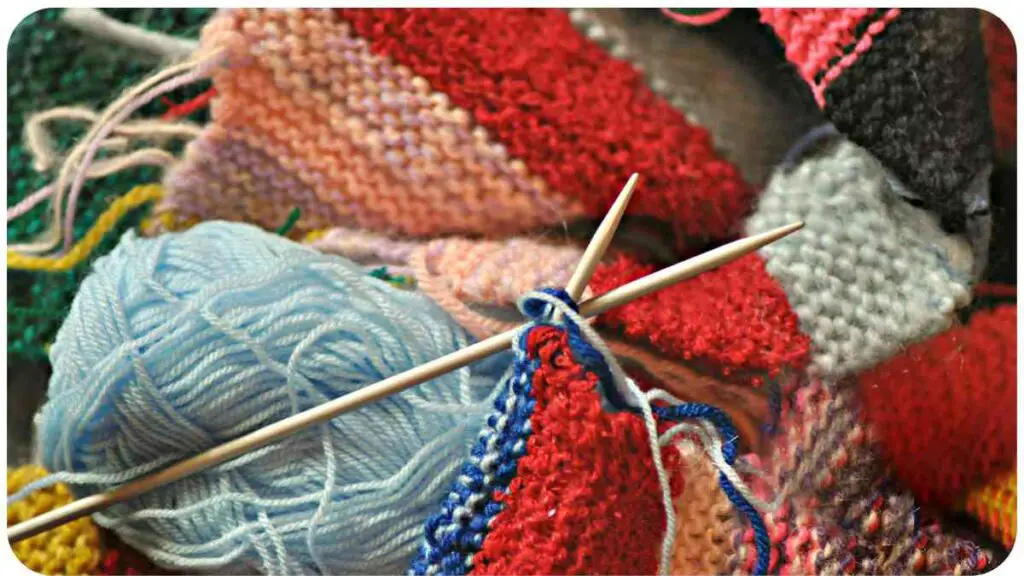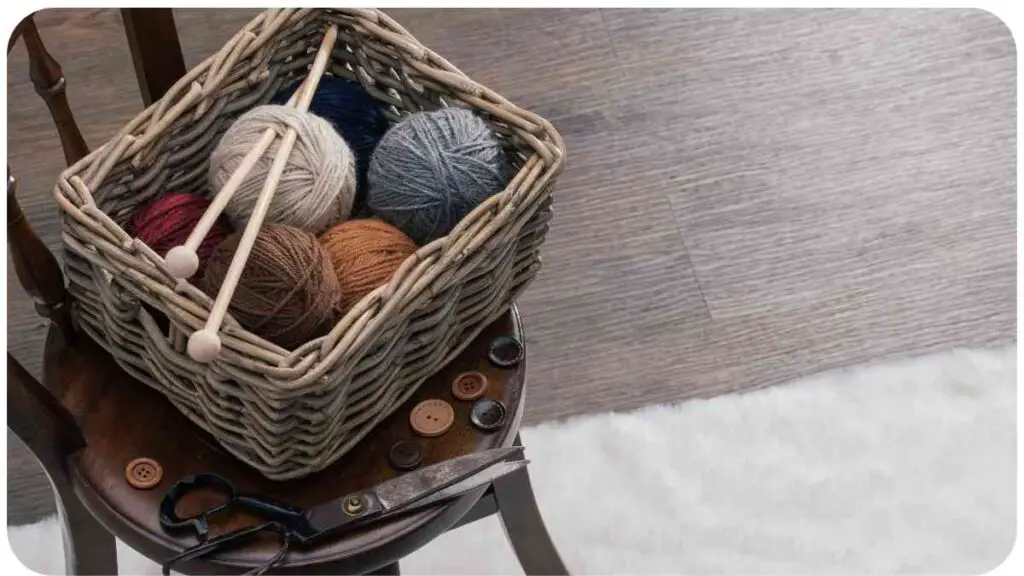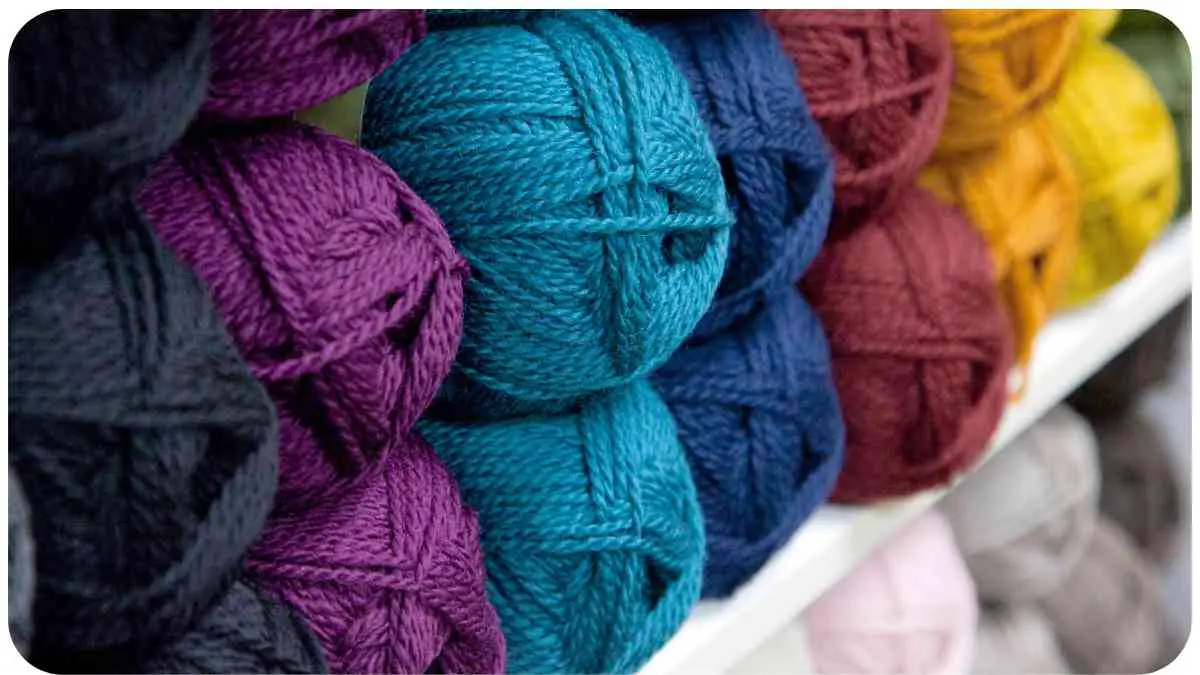When it comes to knitting or crocheting, choosing the right yarn weight is fundamental to the success of your project. The thickness of the yarn directly impacts the final appearance, drape, and overall feel of your piece. To help you navigate the world of yarn, this guide aims to explain everything you need to know about yarn weight.
In this article, we’ll delve into the various yarn weights, their characteristics, and the suitable projects they’re commonly used for. We will also explore different fiber choices and discuss essential tools, techniques, and tips for working with each yarn weight. By the end, you’ll have a comprehensive understanding of yarn weight and feel confident in selecting the perfect yarn for any project.
| Takeaways |
| Understanding yarn weights is crucial for successful knitting and crochet projects. |
| Yarn weight determines the gauge, fabric characteristics, and suitability for different patterns. |
| Yarn weight affects the care instructions and maintenance of your finished projects. |
| Adapting patterns to different yarn weights requires adjusting needle size or modifying the pattern itself. |
| Further reading resources provide additional information and guidance on yarn weights. |
2. What is Yarn Weight?
Yarn weight refers to the thickness or diameter of the yarn strand. Understanding yarn weight is crucial as it determines the gauge or the number of stitches and rows per inch in a knitted or crocheted fabric. Whether you’re a seasoned crafter or just starting your yarn journey, knowing the yarn weight can save you time, frustration, and ensure your project turns out as expected.
“Understanding yarn weights is crucial for any crafter, as it affects project outcomes and material choices. To learn more, read our comprehensive guide on yarn weight.”
3. Understanding Yarn Thickness

Classification of Yarn Weights
Yarn weights are classified into several categories, usually indicated by a number or a written description on the yarn label. The Craft Yarn Council has established standardized yarn weight categories ranging from lace weight (0) to super bulky (6). These classifications help provide consistent guidelines for crafters around the world.
To make it easier for you to understand the different yarn weights, here is a breakdown of the most common yarn weight categories:
| Yarn Weight | Symbol | Description | Recommended Needle/Hook Size |
| Lace | 0 | Very fine and delicate, best for intricate lacework and delicate shawls | 000-1 (1.5-2.25mm) or larger |
| Fingering | 1 | Also known as sock or baby weight, suitable for lightweight garments and accessories | 1-3 (2.25-3.25mm) |
| Sport | 2 | Light and versatile, great for lightweight garments and baby items | 3-5 (3.25-3.75mm) or larger |
| Worsted | 4 | The most commonly used weight, ideal for a wide range of projects including sweaters and blankets | 7-9 (4.5-5.5mm) or larger |
| Bulky | 5 | Chunky and warm, perfect for quick projects like hats and scarves | 10-11 (6-8mm) or larger |
| Super Bulky | 6 | Extremely thick and cozy, perfect for thick blankets and warm accessories | 13 (9mm) or larger |
It’s worth noting that different manufacturers may have slight variations in their yarn weight standards, so it’s always a good idea to check the recommended gauge and needle/hook size on the yarn label.
4. Choosing the Right Yarn Weight

Choosing the appropriate yarn weight for your project requires consideration of various factors. Let’s explore some essential considerations, a yarn weight conversion chart for cross-referencing, and yarn weight substitutes.
“Choosing the right crochet hook size can make or break your project. For an in-depth understanding of crochet hook sizes, explore our guide on crochet hook sizes.”
Project Considerations
The type of project you have in mind plays a significant role in determining the ideal yarn weight to use. For delicate lacework or lightweight shawls, lace weight yarn (0) is the go-to choice due to its fine texture. If you’re creating garments or accessories that require a balance of weight and drape, consider fingering weight (1) yarn.
Sport weight (2) yarn is versatile and suited for baby items, lightweight garments, and socks. For a wide range of projects like sweaters, blankets, and scarves, the most commonly used yarn weight, worsted (4), would be a reliable option. Chunky projects, such as hats and scarves, can be made using bulky (5) yarn. When you’re looking for maximum coziness and thickness, turn to super bulky (6) yarn for projects like blankets and warm accessories.
Yarn Weight Conversion Chart
Converting between yarn weights can help you make substitutions if the desired yarn weight is not available or if you want to try a different thickness. Here’s a yarn weight conversion chart to guide you:
| Yarn Weight | Lace | Fingering | Sport | DK | Worsted | Aran | Bulky | Super Bulky |
| US Knitting | 0 | 1 | 2 | 3 | 4 | 4 | 5 | 6 |
| UK Knitting | 2-ply | 3-ply | 4-ply | DK | Aran | Aran | Chunky | Super Chunky |
| Wraps per | 32+ | 19-22 | 15-18 | 12-14 | 9-11 | 8-10 | 7-8 | 6 or fewer |
| inch (WPI) | ||||||||
| Recommended | ||||||||
| Needle Size | 000-1 | 1-3 | 3-5 | 5-7 | 7-9 | 8-10 | 10-11 | 13 or larger |
| (US) | ||||||||
| Recommended | ||||||||
| Hook Size | B-1 | C2-E4 | E4-G6 | G6-I9 | I9-K10.5 | J10-K10.5 | K10.5-M13 | N15 or larger |
| (US) |
Please note that these conversions are approximate, and differences in gauge and tension can occur due to variations in yarn fiber and individual crocheting or knitting style. It is recommended to work up a swatch to ensure the desired outcome.
Yarn Weight Substitutes
If you come across a pattern that recommends a specific yarn weight and you prefer to use a different weight, yarn weight substitutes can help you achieve the desired results. For instance, if a pattern calls for worsted weight (4) yarn but you want a lighter, airier feel, consider substituting it with a sport weight (2) yarn and adjusting your needle or hook size accordingly.
Keep in mind that substituting yarn weights may impact the final size and drape of the finished item. It’s advisable to make a gauge swatch and compare it to the pattern’s gauge to ensure compatibility. Sometimes, it may be necessary to modify the pattern or make additional adjustments to accommodate the chosen yarn weight.
“Picking the perfect yarn for your crochet project is essential for its success. Discover tips and insights on selecting yarn in our article on choosing yarn for crochet.”
5. Exploring Different Yarn Weights
Now let’s dive into the characteristics and suitable projects for different yarn weights. Understanding the unique qualities of each weight will help you make informed decisions for your knitting or crochet projects.
“Curious if knitting patterns can be used for crochet projects? Explore the key differences and similarities in our article about knitting patterns for crochet.”
Lace Weight
Lace weight yarn (0) is exceptionally fine and delicate. It is perfect for intricate lacework and creating ethereal shawls and delicate accessories. The thin strands of lace weight yarn produce a delicate and lightweight fabric with excellent drape.
Fingering Weight
Fingering weight yarn (1), sometimes referred to as sock weight or baby weight, is versatile and widely used. It is suitable for lightweight garments such as socks, baby clothes, shawls, and versatile accessories like scarves and wraps. Fingering weight yarn also lends itself well to colorwork and intricate stitch patterns.
Sport Weight
Sport weight yarn (2) is light and versatile, offering a slight step-up in thickness from fingering weight. It is ideal for lightweight garments, baby items, and accessories. The added thickness provides more warmth while still allowing for comfortable wear in various climates.
Worsted Weight
Worsted weight yarn (4) is the most commonly used yarn weight for a wide range of projects. It is suitable for knitting or crocheting sweaters, blankets, scarves, hats, and other accessories. Worsted weight yarn strikes a balance between being manageable to work with and providing a substantial end product.
Bulky Weight
Bulky weight yarn (5) is thicker and heavier, making it perfect for quick projects. Hats, scarves, and cozy blankets are popular choices for this weight. Bulky weight yarn creates warm and chunky fabrics with excellent insulation properties.
Super Bulky Weight
Super bulky weight yarn (6) is exceptionally thick and cozy. It is ideal for creating warm blankets, thick scarves, and cozy accessories in no time. With super bulky yarn, you can achieve instant gratification in your projects due to its quick progress.
These are just a few examples of yarn weights, and the possibilities are endless when it comes to crafting with different weights. Experimenting with various yarn weights and their associated projects will help you expand your creativity and discover new techniques.
6. Popular Fiber Choices for Different Yarn Weights

Apart from yarn weight, the type of fiber used can also greatly impact the characteristics and performance of your project. Here are some popular fiber choices for different yarn weights:
Wool
Wool is a versatile and widely used fiber that comes in various forms, such as merino, lambswool, and alpaca wool. Wool yarn provides excellent warmth and insulation, making it suitable for cold-weather garments, cozy accessories, and blankets. Its natural elasticity and ability to retain shape make it an ideal choice for projects with stitch patterns and cables.
Cotton
Cotton yarn is known for its breathability and softness. It is perfect for summer garments, baby items, and lightweight accessories. Cotton yarn doesn’t have as much elasticity as wool, making it less suitable for projects that require stretch or extensive shaping. However, its durability and easy care nature make it a popular choice for everyday wear.
“Uneven knitting can be frustrating. Identify the causes and explore solutions in our comprehensive guide on uneven knitting.”
Acrylic
Acrylic yarn is a synthetic fiber that closely mimics the qualities of natural fibers like wool. It is affordable, versatile, and available in a wide range of colors and styles. Acrylic yarn is easy to care for, making it suitable for garments, accessories, and home decor items that require frequent washing. It’s a great option for those with wool allergies or for projects intended for children or sensitive individuals.
Alpaca
Alpaca yarn is prized for its exceptional softness, warmth, and natural sheen. It is a luxurious fiber choice suitable for both cold and moderate climates. Alpaca yarn is often blended with other fibers, like wool, to enhance its durability and elasticity. It creates lightweight and cozy fabrics, making it perfect for sweaters, scarves, and shawls.
Mohair
Mohair yarn is made from the hair of the Angora goat. It has a unique fluffiness, softness, and a distinct halo effect. Mohair is often used as a blend with other fibers to add texture and enhance the overall look of a project. It is great for creating warm and lightweight garments, as well as accessories like hats and scarves.
Silk
Silk yarn is known for its luxurious feel, sheen, and strength. It is a strong and durable fiber that drapes beautifully. Silk yarn is suitable for elegant garments, accessories, and delicate lacework. Its breathability makes it an excellent choice for summer projects. Silk blends, such as silk and merino or silk and cashmere, offer the best of both worlds in terms of softness and strength.
Cashmere
Cashmere yarn is derived from the soft undercoat of cashmere goats. It is renowned for its exceptional softness and warmth. Cashmere is a luxury fiber that is often blended with other fibers like silk or merino to enhance its durability and affordability. Cashmere yarn is perfect for creating luxurious sweaters, scarves, and accessories.
Different fibers have their unique properties, so it’s important to consider the characteristics of each fiber and how they align with your project’s requirements. Experimenting with different fiber blends can also provide interesting texture and drape effects in your finished pieces.
7. Yarn Weight and Gauge
Understanding the relationship between yarn weight and gauge is essential in achieving the desired outcome for your projects. Gauge refers to the number of stitches and rows per inch of your knitted or crocheted fabric. It helps ensure that your finished piece matches the dimensions specified in the pattern.
Yarn weight plays a significant role in determining gauge. Thicker yarns generally require larger needles or hooks, resulting in fewer stitches and rows per inch, while thinner yarns require smaller needles or hooks, resulting in more stitches and rows per inch.
To achieve the correct gauge, it is important to follow the recommended needle or hook size provided on the yarn label or in the pattern instructions. However, everyone’s tension and technique can vary, so it’s important to make a gauge swatch before starting your project.
A gauge swatch is a small sample of fabric worked in the chosen stitch pattern with the recommended needle or hook size. By measuring the number of stitches and rows per inch in your swatch, you can determine if your gauge matches the pattern’s gauge.
If your gauge doesn’t match, you may need to adjust your needle or hook size. If you have more stitches and rows per inch than the pattern calls for, your fabric is too tight, and you should try using larger needles or hooks. Conversely, if you have fewer stitches and rows per inch, your fabric is too loose, and you should try using smaller needles or hooks.
Achieving the correct gauge is crucial for ensuring that your finished piece has the right size, fit, and drape. Even slight variations in gauge can lead to significant differences in the final outcome of your project, so taking the time to make a gauge swatch and make any necessary adjustments will greatly enhance your knitting or crochet experience.
8. Yarn Weight and Project Planning
When planning a knitting or crochet project, understanding yarn weight is crucial in determining the suitability and outcome of your chosen pattern. Here are some key considerations for project planning based on yarn weight:
Yarn Requirements
Different yarn weights require different quantities for a given project. Thicker yarns cover more surface area, so projects made with bulky or super bulky yarn will require fewer yards compared to projects made with lace or fingering weight yarn.
Fabric Characteristics
Yarn weight greatly influences the characteristics of the fabric you create. Thicker yarns tend to create bulkier and more substantial fabrics, while thinner yarns produce lightweight and delicate fabrics. Consider the drape, warmth, and texture you desire in your finished project and choose a yarn weight accordingly.
Pattern Suitability
Patterns often specify the recommended yarn weight to achieve the desired outcome. While some patterns are specific to a particular yarn weight, many can be adapted to different weights. However, be aware that changing the yarn weight may affect the size, drape, or overall look of the finished item. Always swatch and check your gauge when substituting yarn weights.
Skill Level and Project Complexity
Certain yarn weights are more suitable for specific skill levels or project complexities. Lace or fingering weight yarn may require more advanced skills for intricate stitch patterns, while thicker yarns are generally easier to work with and better suited for beginners. Consider your skill level and the complexity of the pattern when choosing a yarn weight.
Seasonal Considerations
Yarn weight can be influenced by the intended use and final destination of your project. Lightweight yarns like lace weight or fingering weight are great for warm-weather garments and accessories, while bulky or super bulky yarns offer cozy warmth and are more suitable for cold-weather items or accessories like blankets and scarves.
By considering these factors, you can appropriately match the yarn weight to your project’s requirements, achieving the desired design, texture, and functionality. Don’t forget to consult the pattern guidelines and make a gauge swatch to ensure your chosen yarn weight aligns with the project’s specifications.
9. Yarn Weight and Project Adaptation
Yarn weight flexibility allows for creative freedom and adaptation in your projects. Here are some ways you can adapt a pattern to a different yarn weight:
Adjusting Needle or Hook Size
When using a heavier yarn weight than the pattern specifies, you may need to use larger needles or hooks to maintain the correct gauge. This adjustment ensures that your stitches are not too tight, and your fabric does not become overly dense.
Conversely, when using a lighter yarn weight, you may need to use smaller needles or hooks to achieve the required gauge. This prevents your stitches from being too loose, resulting in a fabric that lacks structure or warmth.
Swatching and Gauge Checking
Regardless of the yarn weight you choose, swatching and checking your gauge are essential steps. Work a swatch of the pattern stitch using your chosen yarn weight and recommended needle or hook size. Measure the stitches and rows per inch and compare them to the pattern’s gauge. If the gauge does not match, adjust your needle or hook size accordingly until the gauge meets the pattern’s requirements.
Modifying the Pattern
Sometimes, a pattern may need more than just adjusting the needle or hook size to accommodate a different yarn weight. If the yarn weight you want to use varies significantly from the pattern’s recommendation, you may need to modify the pattern itself.
Consider adjusting the stitch counts, repeat sections, or overall construction to achieve the desired size and fit. Keep in mind that modifying a pattern requires an understanding of knitting or crochet techniques and pattern structure.
Mixing Yarn Weights
Another option is to mix different yarn weights within a single project. This can create interesting texture, color, and visual contrast. However, it’s important to ensure that the combined yarn weights work well together and the overall fabric does not become imbalanced or uneven.
When mixing yarn weights, take care to maintain a consistent gauge throughout the project. Focus on maintaining an even tension between the different yarns to ensure a cohesive and professional result.
Adapting a pattern to a different yarn weight opens up a world of creative possibilities. It allows you to customize projects based on your preferences, yarn availability, and desired outcome. With careful planning, swatching, and modification if necessary, you can successfully adapt patterns to suit your chosen yarn weight.
10. Yarn Weight and Care Instructions
The yarn weight you select can also impact the care instructions for your finished project. Different fibers and yarn weights have specific care requirements to ensure the longevity and appearance of your knitted or crocheted items.
Hand-Washing vs. Machine-Washing
Thicker yarn weights, such as bulky or super bulky, are often more suitable for machine-washing. They can withstand the agitation and spinning of washing machines without compromising the integrity of the fabric. However, always check the yarn label or pattern instructions for specific care recommendations.
Thinner yarn weights, like lace or fingering, are usually more delicate and may require hand-washing. The fine strands can become tangled or damaged in a washing machine. Hand-washing ensures gentle cleaning and minimizes the risk of stretching or pulling.
Drying Methods
Consider the drying method recommended for your yarn weight. Thicker yarns often hold more moisture, so machine-drying or laying them flat to dry can speed up the process. Be sure to check the yarn label for guidance on drying.
Thinner yarn weights may require more delicate drying methods. After hand-washing, carefully squeeze out excess water and lay the item flat on a towel to dry. This helps to preserve the shape and avoid stretching.
Blocking
Blocking is an essential step in finishing your project, and the yarn weight can determine the blocking method. Thicker yarns usually respond well to wet-blocking, where the item is soaked, gently squeezed, and shaped while damp. This process helps even out stitches and define the overall shape of the finished piece.
Thinner yarn weights often benefit from steam-blocking or pin-blocking. Steam-blocking involves using an iron or steamer to apply heat and moisture to the fabric, allowing it to relax and take on the desired shape. Pin-blocking entails stretching the fabric to the desired dimensions, pinning it in place, and allowing it to dry.
Fiber-Specific Care
Different fibers also have specific care requirements. Some yarns, such as wool or silk, may need special detergent or require gentle handling. Others, like acrylic or cotton, may be more forgiving and have easier care instructions. Always refer to the yarn label or pattern instructions for specific recommendations on caring for your chosen fiber.
Taking proper care of your finished projects helps maintain their quality and appearance over time. By following the recommended care instructions for your yarn weight and fiber type, you can ensure that your knitted or crocheted items stay beautiful and last for years to come.
Further Reading
Here are some helpful resources for further reading on understanding yarn weights:
- Yarnspirations: How to Understand Yarn Weights – Yarnspirations provides a comprehensive guide to understanding yarn weights, including detailed explanations and examples.
- Doradoes: Yarn Weights Explained – This blog post by Doradoes offers a clear and concise explanation of different yarn weights, along with visuals to aid comprehension.
- The Spruce Crafts: Understanding Yarn Weights – The Spruce Crafts provides an informative article that breaks down yarn weights and offers guidance on selecting the right yarn for your projects.
FAQs
Here are some frequently asked questions about yarn weights:
What is the purpose of yarn weight classification?
Yarn weight classification helps knitters and crocheters select the appropriate yarn for their projects. It provides a standardized way to describe the thickness and characteristics of different yarns.
How do I determine the yarn weight of an unlabeled yarn?
To determine the yarn weight of an unlabeled yarn, you can refer to the recommended needle or hook size. Thicker yarns typically require larger needles or hooks, while thinner yarns require smaller ones.
Can I substitute yarn weights in a pattern?
Yes, you can substitute yarn weights in a pattern, but it may require adjustments in needle or hook size, stitch count, or overall pattern modifications. Swatching and checking gauge are crucial when making substitutions.
What is the lightest yarn weight?
Lace weight is the lightest yarn weight available. It is extremely fine and delicate, often used for intricate lacework and lightweight garments.
What is the heaviest yarn weight?
The heaviest yarn weight is known as super bulky or jumbo weight. It is very thick and is often used for quick and chunky projects like blankets and scarves.

My name is Hellen James, and I’m a crochet and knitting expert. I’ve been crocheting since I was just a kid, but I started taking it seriously when I realized that it was a great way to de-stress and relax. Now that I have kids of my own, I love teaching them how to do it too!

